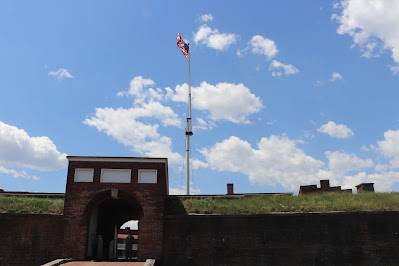 |
| Pinchas Gutter |
The Illinois
Holocaust Museum is in Skokie, Illinois. It was established after several
marches were threatened in Skokie by neo-Nazis. The Chicagoland Holocaust
Survivors created the museum. It moved to its present building in 2009. We have
been to the Holocaust Museum in Israel, the Documentation Center in Nuremberg,
and the Holocaust Museum in Washington D.C. So why go to another holocaust
museum? We had seen on 60 Minutes showing how Holocaust stories were being
preserved in a new way, week-long interviews that were captured by holograms.
You can ask questions of a survivor and get their story. The Skokie museum is
one of the places where you get to interact in this fascinating way. In our
case, we heard from Pinchas Gutter, born in Poland in 1932, his family was sent
to the Warsaw Ghetto and then sent to the Majdanek concentration camp. Here men
and women were separated, and Pinchas saw his parents for the last time. He managed
to survive three different camps and was liberated in April 1945. Even after
liberation, he had to survive in a country devastated by war. He was eventually
sent to a rehabilitation camp in Britain, and subsequently lived in France,
Israel, South Africa, and now Canada. His story was fascinating, particularly
how small kindnesses allowed him to survive the camps and their aftermath.
Another interesting special exhibit was “The Journey Back”
where you accompany a survivor back to the camps he had been sent during the
war. This is a virtual reality experience, my first ever, but was somewhat
disappointing as they put black and white pictures of prisoners mixed in with
the color picture of the prison camp today. Still, it was good.
 |
| Warsaw Ghetto - 20% of Warsaw's Population in 2% of land |
The major exhibits go through the history of the rise of the Nazi Party, the targeting of Jews as the cause of Germany’s suffering after World War I, the elimination of Jewish businesses, the segregation of Jews, cripples, and other ‘undesirables’ into Ghettos and labor camps, and the “final solution” to exterminate the Jewish race. We were familiar with most of this material from other museums.
 |
| Jews Killed (red) vs. Pre-war Population |
We finished off our trip by visiting our granddaughters in Minneapolis before heading home.















































